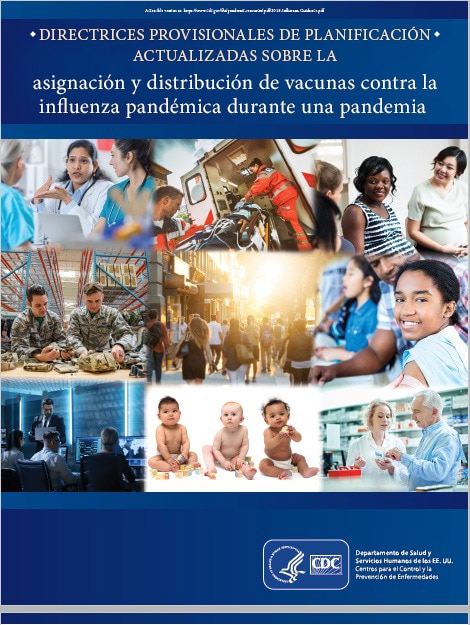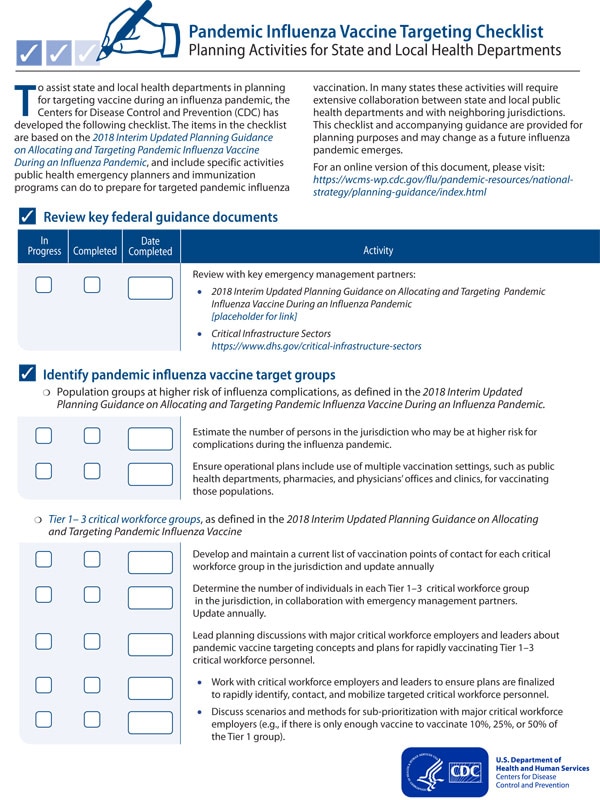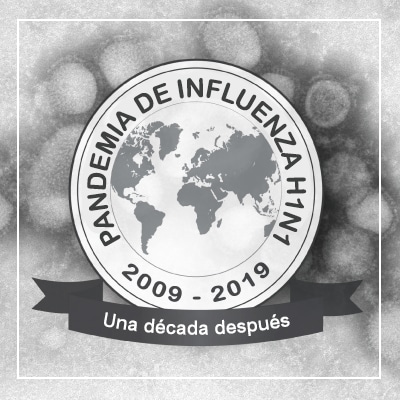Vaccination of Tier 1 at All Pandemic Severities

Tier 1 includes the highest priority population groups identified in each of the four categories (Table 1) and may vary based on pandemic severity and supply. However, Tier 1 is the highest priority group to receive vaccination if there is limited vaccine supply for any level of pandemic severity; groups within Tier 1 may change depending on the characteristics and epidemiology of the pandemic and its impact. For instance, people over age 65 years are in Tier 2 for a low level of pandemic severity, but are in Tier 4 for a pandemic with high/very high level of severity. Occupationally-defined groups are included in Tier 1 during a high or very high level of pandemic severity as societal disruption is likely during those scenarios, and they are critical to maintaining the effective functioning of society. The burden of illness and absenteeism may be markedly increased in a pandemic, and the risk of occupational exposure and infection may be high because of contact with ill persons, living conditions, or geographic location.
In addition to targeting vaccination in Tier 1 to groups that provide critical societal goods and services, public and stakeholder groups also reinforced the value of including pregnant women and young children in this tier when they are likely to be at high risk of pandemic influenza-related hospitalizations or death.
Potential sub-targeting of Tier 1
Recognizing that it is possible that vaccine may be in extremely short supply when first available, it may be necessary to sub-prioritize vaccination of groups within Tier 1. Further guidance may be issued during a pandemic to specify which persons and groups should be included if more focused targeting is needed. For example, hospital-based “front-line” healthcare providers who are essential for maintaining emergency departments and intensive care units and providing medical and nursing care on inpatient units may be vaccinated earlier than other healthcare providers. In a scenario such as the 2009 H1N1 pandemic when the risk to the effective functioning of society was minimal, vaccine might be sub-targeted for those who are most medically vulnerable to severe illness such as pregnant women and children 6-35 months and critical healthcare personnel over some other groups in this tier. This proposed ranking of groups within Tier 1 balances allocation to achieve multiple pandemic response goals and protects persons who are at highest occupational risk of becoming infected.
Prioritization of vaccination groups within Tier 1 based on availability of vaccine supply
Vaccine in short supply (Sufficient to vaccinate all Tier 1)
All groups would be offered vaccine at the same time:
- Deployed and mission critical personnel
- Critical healthcare (inpatient, outpatient, long-term care, pharmacists, pharmacy technicians)
- Public health personnel
- Emergency Medical Services (EMS)
- Law enforcement
- Fire services
- Manufacturers of vaccine and antivirals
- Pregnant women
- Infants and toddlers
Vaccine in extremely short supply (Insufficient to vaccinate all of Tier 1)
Proposed ranking of groups within Tier 1:
- Front-line inpatient and hospital-based health care personnel caring for sickest persons; health care personnel with highest risk of exposure
- Deployed and mission critical personnel who play essential role in national security
- Front-line EMS
- Front-line outpatient health care personnel, pharmacists and pharmacy technicians, and public health personnel who provide immunizations and outpatient care
- Front-line law enforcement and fire services personnel
- Pregnant women and infants aged 6 -11 months old
- Remaining groups in Tier 1 (includes other Tier 1 inpatient and outpatient healthcare personnel not vaccinated previously; public health; EMS, law enforcement, and fire services personnel; manufacturers of pandemic vaccine and antiviral drugs; and children aged 12-35 months old


